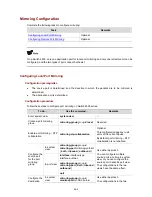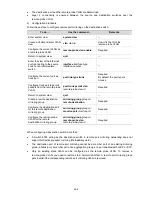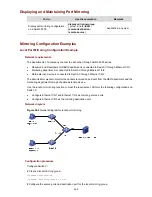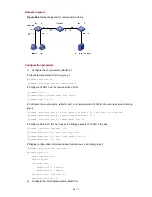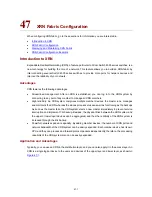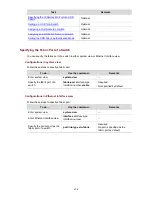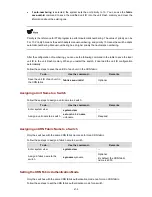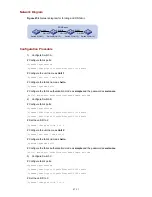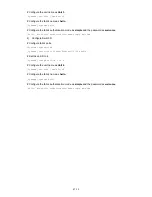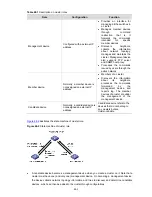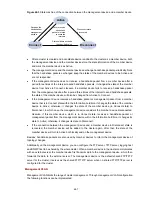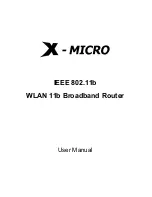
Status
Analysis
Solution
auth failure
The XRN fabric authentication modes
configured for the local device and that
of the fabric are not the same, or the
password configured does not match.
Configure the XRN fabric
authentication modes and the
passwords for the local device
and the fabric as the same.
How XRN Works
When a fabric is established, the devices determine their respective roles in the fabric by comparing
their CPU MAC addresses. The device with the lowest CPU MAC address is elected as the master and
the other devices are slaves.
After the election, the fabric can operate normally. The following two functions of XRN can provide
simple configuration mode, enhanced network performance and perfect redundancy backup
mechanism for users.
DDM
DDM (Distributed Device Management) is a new device management mode provided by XRN. In
normal cases, a fabric can be considered as a single device. You can manage the entire fabric by
logging onto any device in the fabric with different logging modes. The devices in the fabric synchronize
their configurations by exchanging packets, thus ensuring stability of the fabric.
FTM program uses Unit ID, or device ID to distinguish between the devices in a fabric when you
manage them. On initialization of the XRN function, each device considers its Unit ID as 1 and after a
fabric connection is established, the FTM program automatically re-numbers the devices or you can
manually configure the Unit ID of them.
The master in a fabric collects the newest configurations of the user and the slaves periodically
synchronize the configurations from the master. In this way, the entire fabric can operate with the same
configurations.
DLA
As a new link aggregation mode, DLA (Distributed Link Aggregation) can improve fault tolerance and
redundancy backup of user networks.
Link aggregation enables you to configure ports on the same device as an aggregation port group,
avoiding network interruptions resulted from single port failure. Based on link aggregation, DLA
provides a more reliable solution, with which you can select ports on different devices to form an
aggregation port group. In this way, single port failure can be avoided and network reliability can be
greatly improved, because the fabric can communicate with the destination network through ports on
other devices in case a single device fails.
XRN Fabric Configuration
XRN Fabric Configuration Task List
Complete the following tasks to configure XRN fabric:
Task
Remarks
Specifying the Fabric Port of a Switch
Required
47-5


